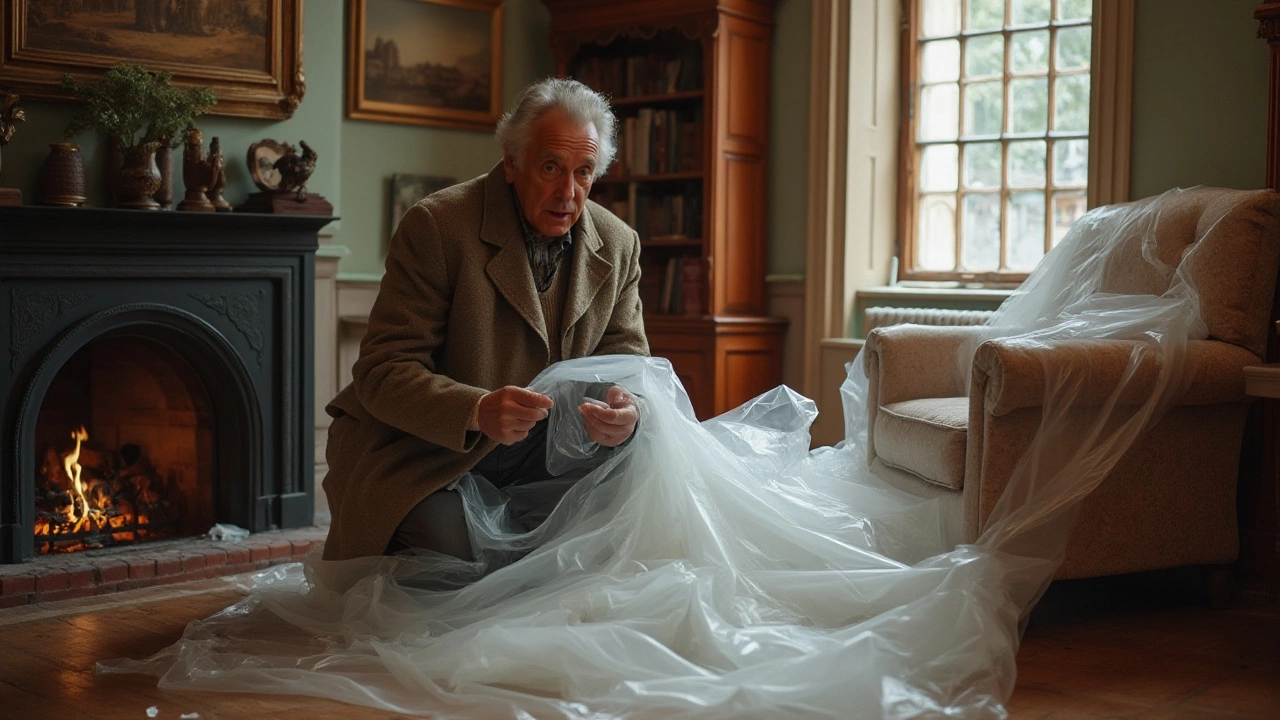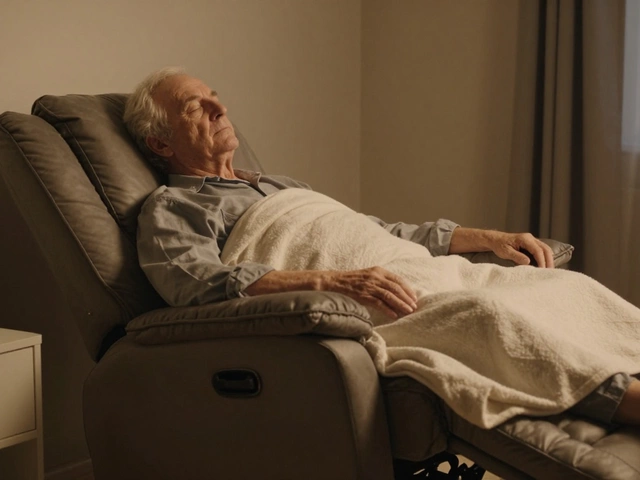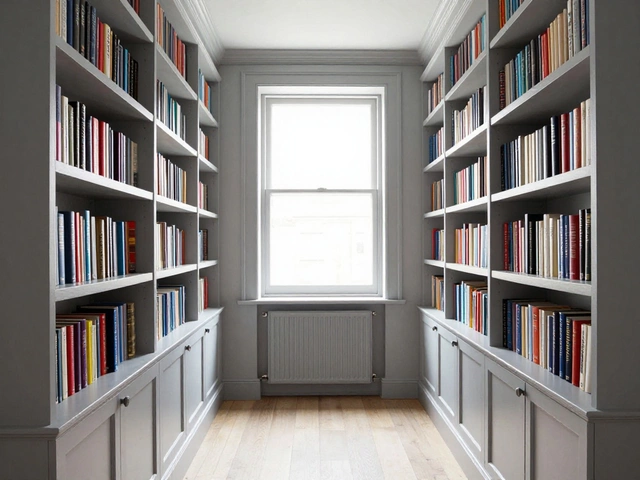Isn't it satisfying to know your antique wooden table or that comfy velvet couch can remain pristine, even in storage? Using plastic wrap for furniture is a common practice and for good reasons. It shields against grime, pesky critters, and accidental nicks during storage. But there's a bit more to the story than just cocooning your beloved pieces and calling it a day.
While plastic serves as a formidable barrier, it can lead to a lack of air circulation, potentially promoting unwanted moisture buildup. This could encourage mold growth, damaging the very items you're aiming to preserve. Striking a balance is key—breathability and protection should go hand in hand.
Simple steps, such as cleaning furniture before wrapping and adding a layer of breathable fabric, can make a huge difference. Whether it’s for a brief hiatus or an indefinite stay, understanding the best practices in furniture storage can protect more than objects; it safeguards memories.
- Benefits of Wrapping Furniture in Plastic
- Potential Drawbacks and Risks
- Best Practices for Plastic-Wrapped Storage
- Alternative Storage Solutions
Benefits of Wrapping Furniture in Plastic
Picture this: you've just moved your cherished wooden dining set into a storage unit, and the thought of dust and potential damage keeps you up at night. Now, imagine it tightly wrapped in a plastic shroud, untouched by the elements. Plastic wrapping isn't just a superficial layer; it's a robust shield against dust, dirt, and unexpected scratches that can mar cherished furniture surfaces. This material provides a reliable solution for furniture storage, safeguarding that heirloom sideboard or the luxurious leather sofa you splurged on last year. It's a simple action that offers extensive peace of mind.
Plastic wrap also serves as an essential barrier against moisture, a silent enemy of furniture, especially vulnerable materials like fabrics and woods. Whether your precious items are nestled in a storage facility or temporarily residing in a damp basement, moisture is an ever-present threat. Using plastic protects against condensation and water spills, ensuring that wood doesn't swell or warping doesn’t occur. For upholstered furniture, it can help in preventing color fading and odor absorption from external sources. According to a survey by the Self-Storage Association, approximately 10% of storage negligence cases are due to moisture-related damages. Wrapping such items ensures longevity, keeping them just as vibrant or robust as they were on the day they went into storage.
According to specialist Thomas Greenfield from the Canadian Conservation Institute, "Proper protective wrapping is only second to preventive cleaning in maintaining the integrity of stored furniture over long periods."With the advent of better-grade plastic wraps, these materials have become more versatile, offering varying levels of protection depending on the client’s needs. Some wraps provide UV protection, deflecting harmful rays that can cause exposure-based degradation over time. Others come with an anti-static feature, repelling dust and reducing the frequency of periodic cleaning. It's not just about cocooning furniture; it's about doing so in a way that offers effective, tailored protection.
For movers and individuals looking to relocate, plastic wrap is also an ideal tool. It keeps wrapping method efficient and items tightly bundled without leaving adhesive residues that tape might. In essence, plastic provides a clean, efficient, and effective covering. When combined with thought-out storage planning, it can be a lifesaver in preserving your item's value, minimizing unexpected surprises when the time comes to finally unwrap your cherished pieces.
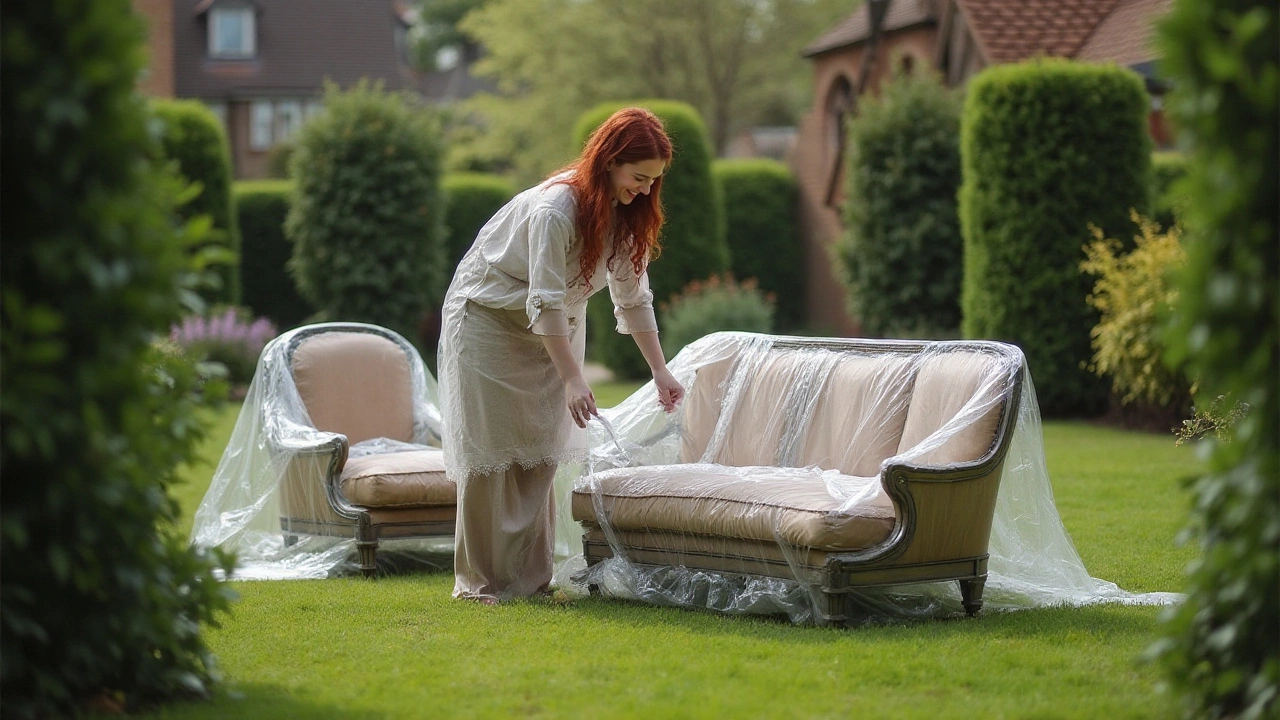
Potential Drawbacks and Risks
Storing your furniture wrapped in plastic might seem like a foolproof method to maintain its quality, but it can present certain risks you should be aware of. One major issue is the potential for moisture build-up. Plastic is non-porous, which means it creates a sealed environment around the furniture. This might sound great for keeping outside elements away, but the lack of ventilation can trap moisture inside. Humidity from the air or any dampness present on the furniture itself when wrapped can lead to condensation. In time, this hidden moisture can foster mold and mildew, which not only emits an unpleasant odor but might cause structural damage to wooden elements and staining on upholstery.
Moreover, using plastic wrap might inadvertently cause temperature fluctuations to impact differently on your stored items. During hot seasons, plastic can trap the heat, potentially warping wooden surfaces or fading fabric upholstery. Contrastingly, in colder environments, plastic-wrapped objects might experience thermal contraction. These conditions create stress on the material over time, possibly leading to cracks or brittleness in wood. Misusing plastic can also affect leather furniture by making it sweat, which might lead to that visibly “sticky” leather appearance. This doesn’t just spoil aesthetics; it can deteriorate the quality of the leather permanently.
Another aspect worth considering is the environmental angle. Plastic, being non-biodegradable, contributes to environmental waste. Using alternatives that align with eco-conscious living is not just a matter of personal preference but impacts global efforts to reduce plastic waste. According to Sarah Miller, a sustainability expert, "While convenience often dictates our choices, the effects of using excessive plastic are unmistakable and immediate steps should be taken towards greener alternatives." This sentiment echoes widely across the globe as individuals and companies strive for conscientious consumption and waste management.
It's also essential to recognize that using plastic wrap may invite pest issues. Creatures seeking warmth might find themselves nestled between the folds of plastic, leading to contamination or damage. When furniture is improperly wrapped, gaps can allow insects to enter and create nests, which may go undetected until the wrapping is removed. Rodents, too, can gnaw through plastic, especially if it's left for extended periods, causing holes that welcome rain and debris.
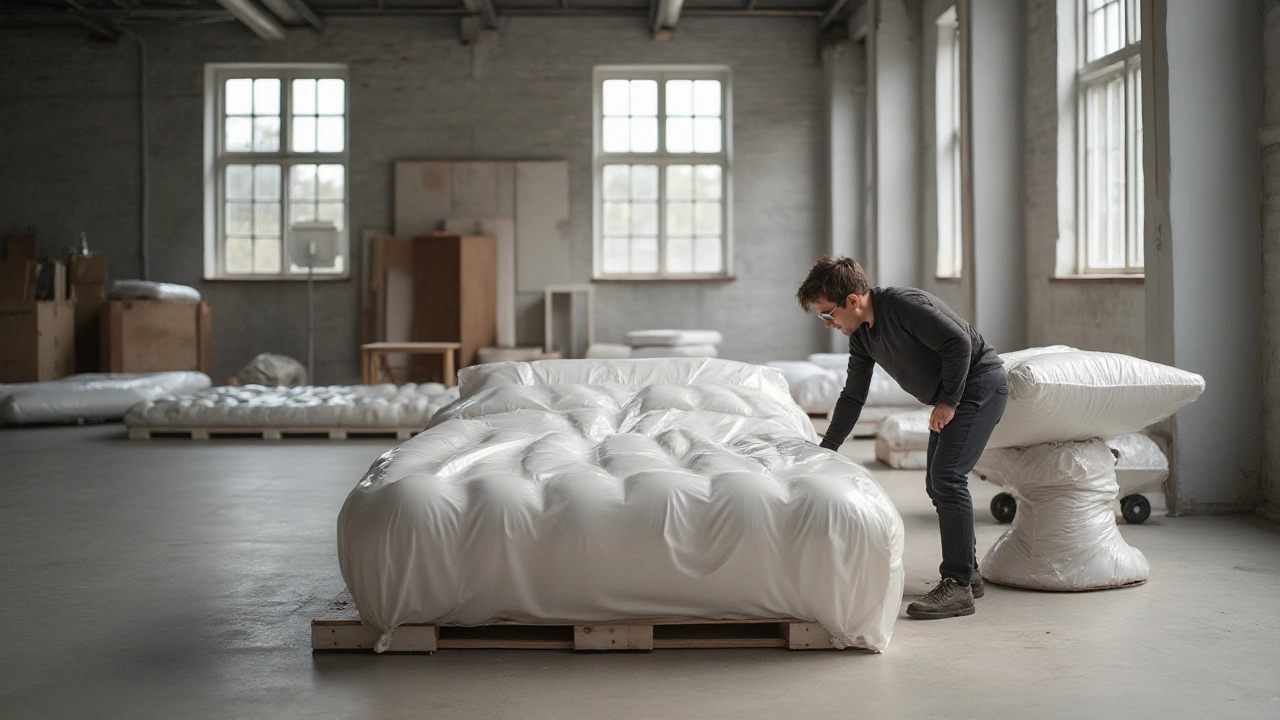
Best Practices for Plastic-Wrapped Storage
Ensuring that your furniture remains in top-notch condition during its stay in storage requires more than just wrapping it in plastic. Proper preparation and execution are paramount. Begin by thoroughly cleaning each furniture piece. Dust, debris, and even old stains left unchecked can turn into persistent problems during storage. For wooden furniture, use a gentle wood cleaner to remove grime. Upholstery might need a vacuum or a fabric cleaner, depending on the material. It's about creating a fresh slate—a clean piece ready to be protected.
Once cleaned, consider applying protective measures suited to each type of material. For instance, conditioning leather or protecting wood with a layer of beeswax can add an extra shield against dryness and potential cracking. Remember, the goal is to store it in better condition than when you bought it. Speaking of condition, ensure that any dismantlable furniture is taken apart. This minimizes stress on joints and makes wrapping and storing much easier. Use clearly labeled bags for screws, bolts, and other small parts, literally making things screw-tight when it’s time to reassemble.
"During long-term storage, the key is to stop pests and moisture from creating havoc on precious furniture," advises Martha P. Johnson, curator at the Furniture Preservation Trust.
Plastic wrap is a fantastic barrier against external elements, but it should be applied smartly. Instead of tightly encasing the furniture entirely, wrap the more vulnerable parts—legs, arms, and corners—while ensuring there is room for air to circulate. Think of it as ventilated protection. If moisture becomes a concern, including silica gel packs is a reliable and often underutilized method to keep dampness at bay. Avoid directly pressing the plastic against delicate surfaces by first covering them with breathable fabric like cotton sheets. This prevents condensation and suffocates mold.
Using proper storage settings matches the effort in wrapping. The location should maintain a consistent temperature and boast low humidity levels, keeping the climate constant. A temperature-controlled unit is optimal, but the next best is a cool, dry place away from windows and moisture-prone areas like basements or attics. Always place stored furniture on pallets or something to elevate them off the ground. This prevents unexpected water exposure or floor-level dampness, which is all too common in basement or garage storage situations.
Finally, check the storage condition regularly, especially during seasonal changes or if an area is prone to humidity shifts. This vigilance helps spot potential problems early on and acts as preventive maintenance. Your vigilance and care echo respect for the craftsmanship and memories each piece holds. The journey from storage back to your living space should be seamless, leaving only a trace of well-preserved treasures.
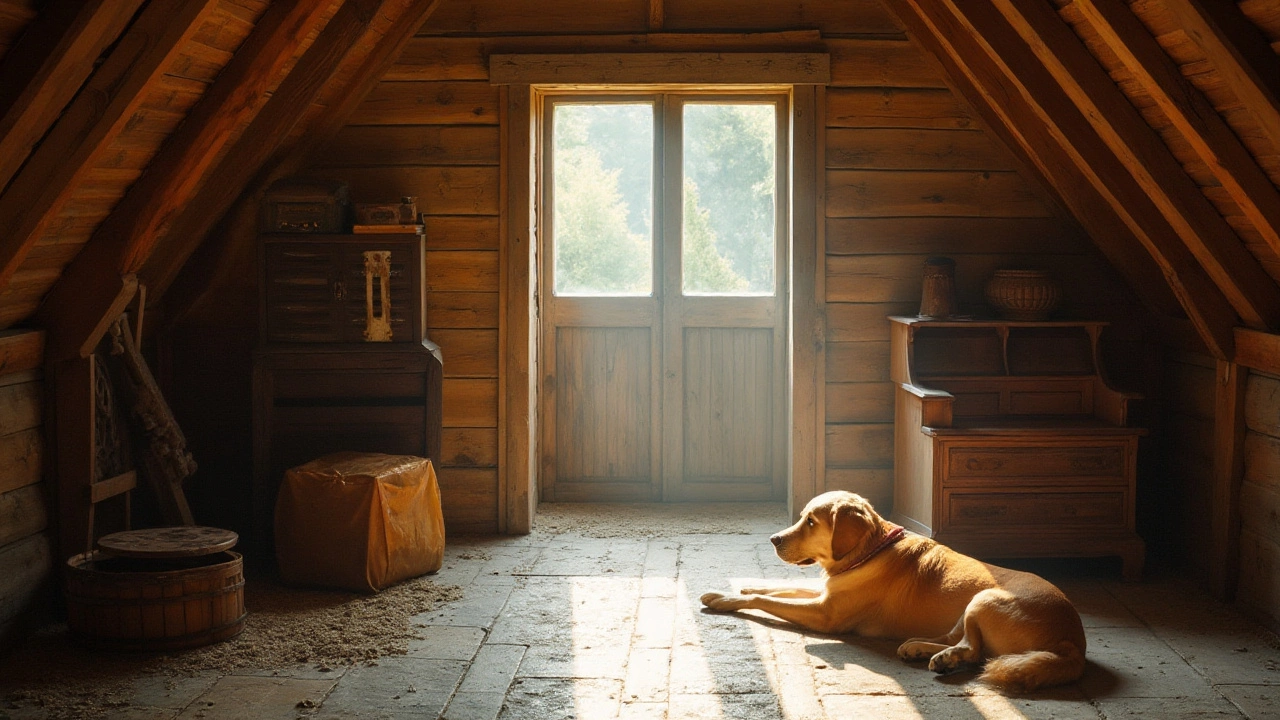
Alternative Storage Solutions
When storing furniture, alternative solutions can be a game-changer. One compelling option is climate-controlled storage units. These offer a stable environment, free from extreme temperature fluctuations or humidity changes. Such units are particularly beneficial for wooden and upholstered furniture, as they minimize warping and mildew. Unlike plastic wrapping, which may suffocate, climate-controlled facilities provide generous air circulation, ensuring each piece breathes. The integrity of your items is preserved without the added risks of mold or dampness typically associated with prolonged plastic coverage.
For those more inclined towards natural protection, dust covers made of cotton or canvas can be excellent. These materials are breathable, preventing harmful moisture buildup. Cotton, in particular, has been praised by conservationists for its ability to protect surfaces while allowing essential airflow. This method excludes pests effectively, as pests are less attracted to these materials compared to synthetics. If you have heirloom pieces, especially those needing special care, natural covers can be an inexpensive yet invaluable addition to your storage strategy.
An interesting trend emerging is modular shelving systems. Say goodbye to stacks of boxes and awkwardly placed chairs. With adjustable platforms, furniture can be stored without stacking, preventing unwanted pressure points and indents. This method not only optimizes space efficiency but also ensures each item maintains its original form. Many home storage enthusiasts have adopted these systems as they find them adaptable and space-savvy.
Lastly, let's not overlook the utility of disassembling furniture. Breaking down larger items, when feasible, secures better protection and space management. Accessories and loose parts can be packed separately, reducing the chance of damage. This technique minimizes the awkward bulk that often comes with trying to store oversized pieces. Disassembly also makes transportation smoother and less risky. Anyone who's ever maneuvered a bulky sofa into a tight spot knows exactly how critical this step can be.
"Understanding the nuances of different storage methods can extend the life of your valuable furniture by decades," remarks John Mansfield, a notable figure in the field of preservation.
The choice of storage solutions extends far beyond mere protection. It’s about preserving the essence of your furniture and the memories they hold. From climate-controlled havens to innovative shelving, alternatives to plastic wrapping abound, each with unique benefits suited to various needs. Whether for short-term storage or over the long haul, exploring these methods ensures that cherished pieces don't just survive storage but thrive when you revisit them.

